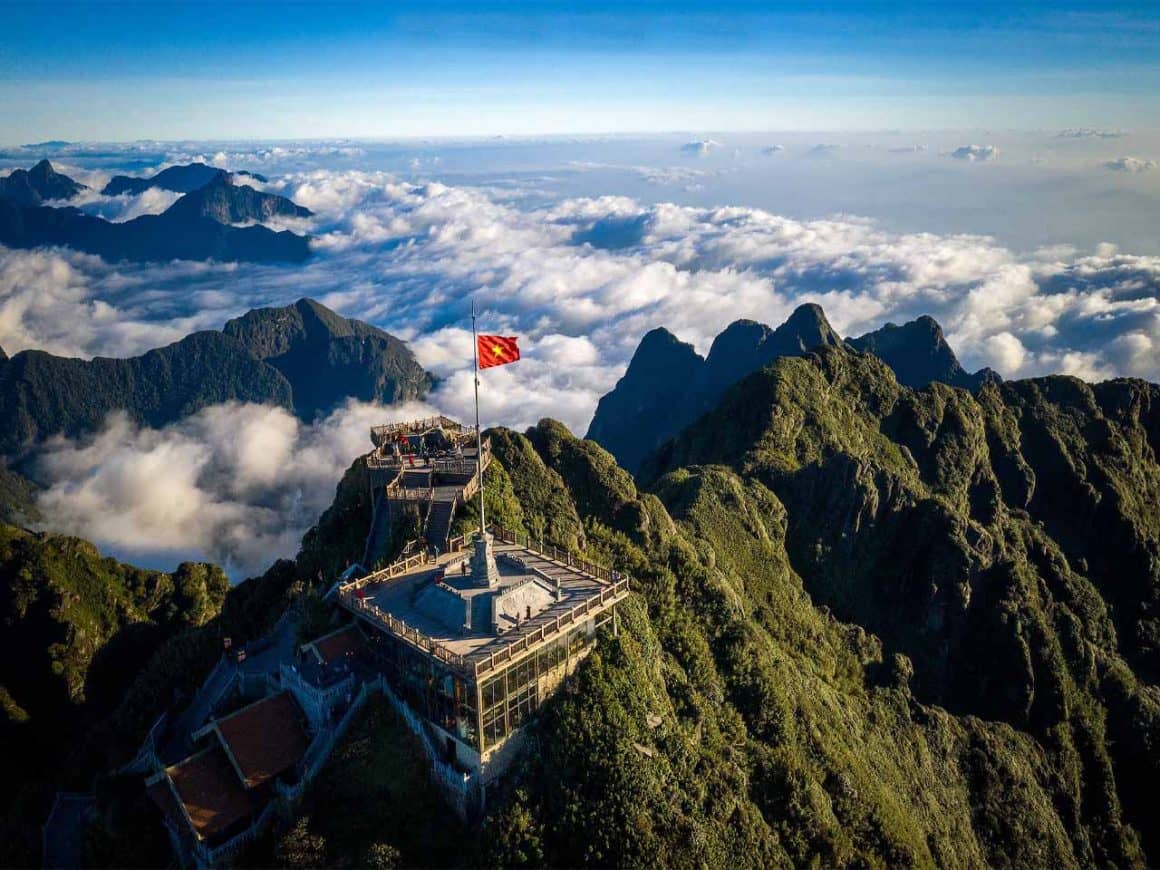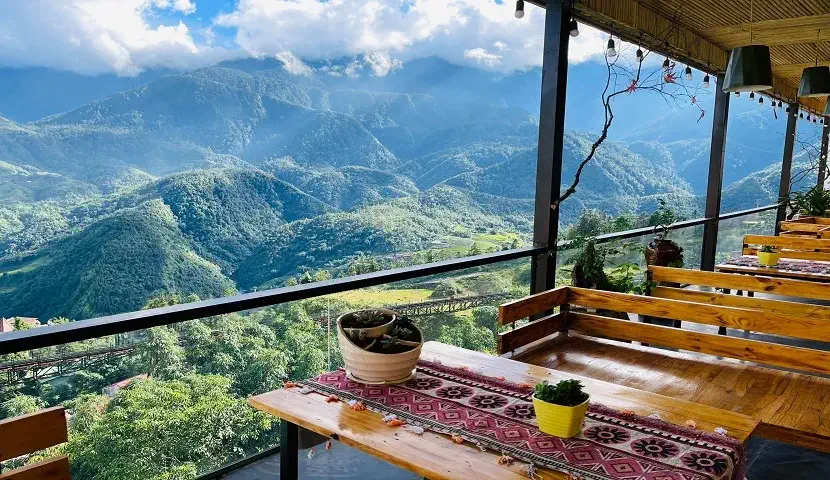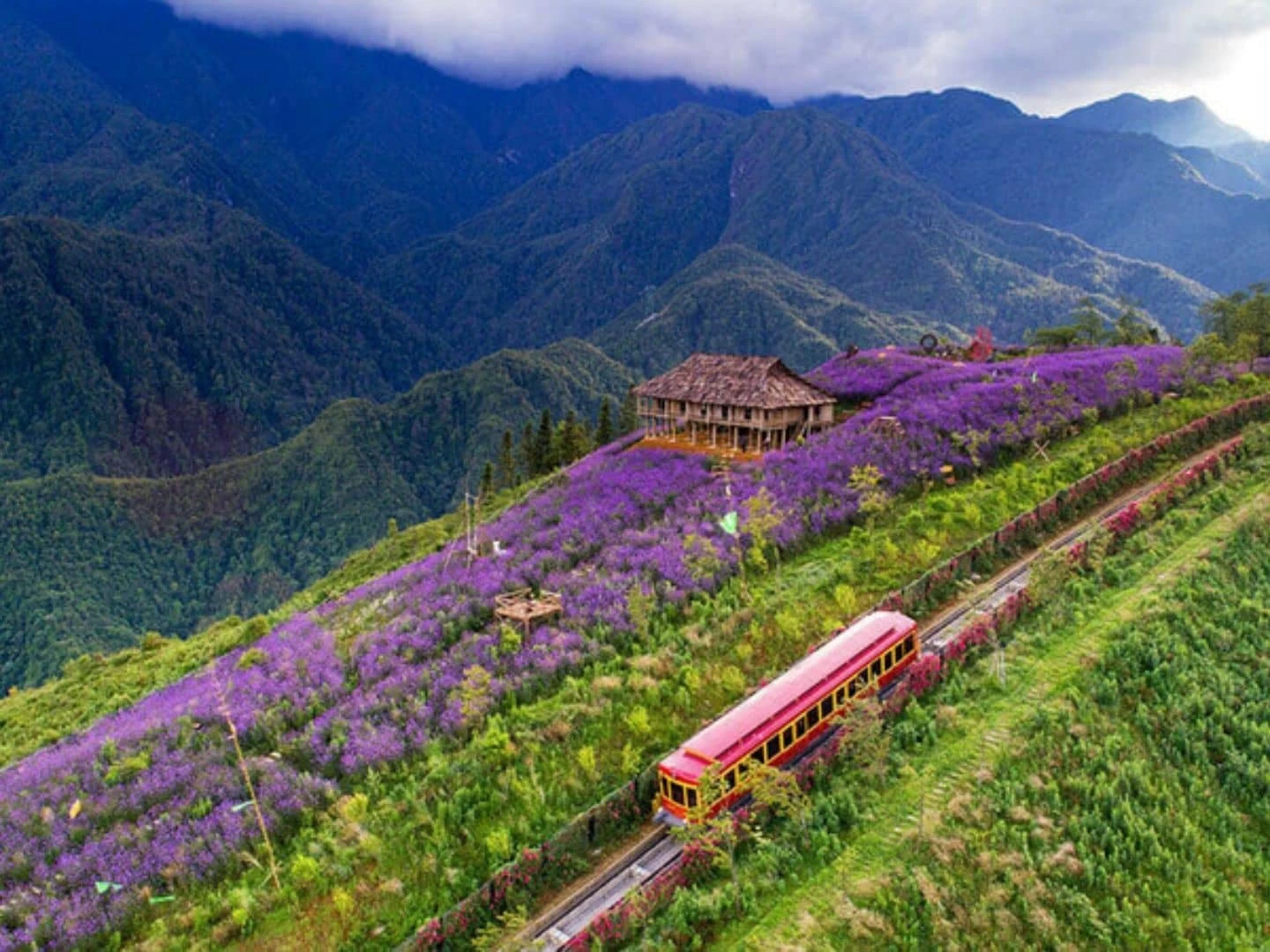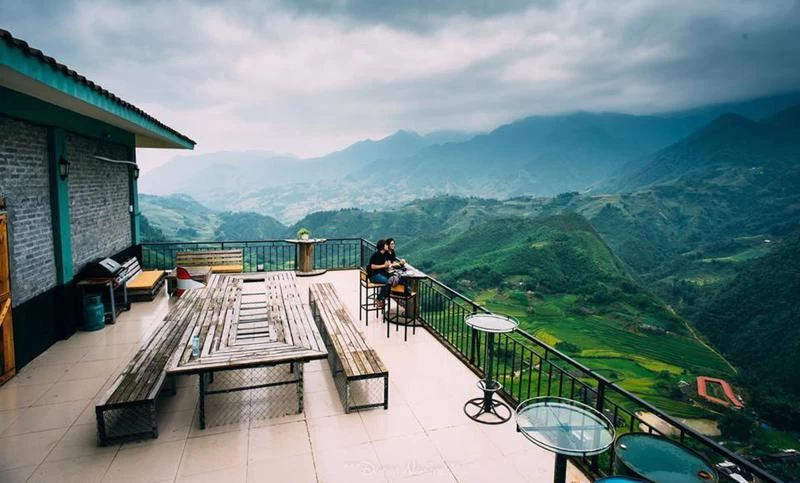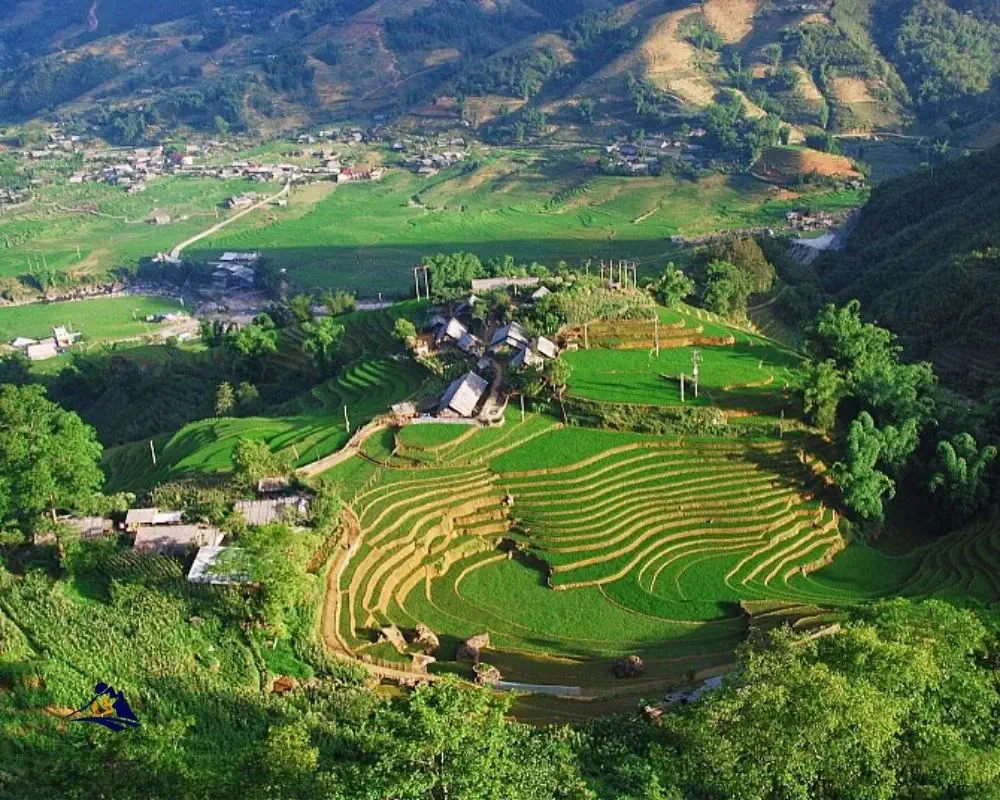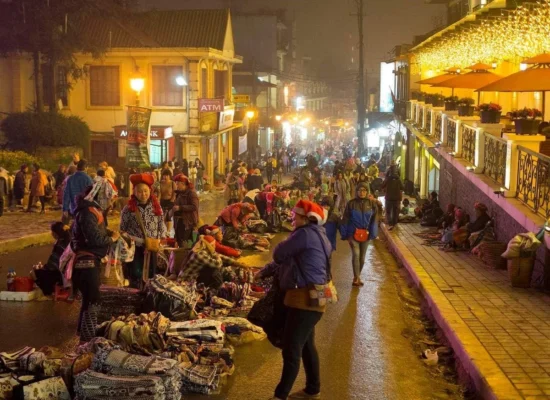
Explore Sapa night market
Discover the vibrant Sapa Night Market, where you can immerse yourself in local culture and explore a variety of unique handcrafted souvenirs. From the bustling Sapa Night Market with its colorful textiles and artisanal goods to delicious street food like grilled skewers and traditional dishes, you can interact with friendly local vendors. Explore the best tips for visiting, including the ideal times and must-see attractions. It’s perfect for travelers seeking an authentic Sapa experience.
I. Introduction to Sapa
Nestled in the northern mountains of Vietnam, Sapa is a renowned tourist destination celebrated for its stunning natural landscapes and rich cultural heritage. This charming town, surrounded by terraced rice fields, misty valleys, and majestic peaks, is home to diverse ethnic communities that preserve age-old traditions. Sapa attracts travelers not only with its breathtaking scenery but also with its vibrant cultural experiences.
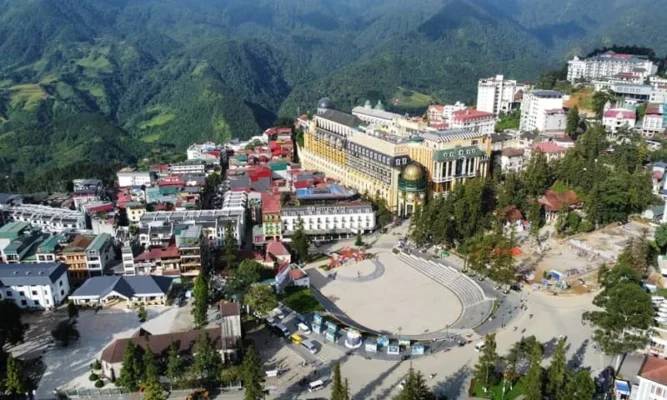
Sapa is beautiful and peaceful
Among the highlights of a visit to Sapa are the lively night markets, where the town truly comes to life after dark. These night markets are much more than just places to shop—they offer a unique glimpse into the local culture, with opportunities to explore traditional crafts, sample regional delicacies, and witness the daily lives of ethnic minorities. For anyone looking to immerse themselves in the authentic atmosphere of Sapa, these night markets are an essential experience not to be missed.
II. Overview of Sapa Night Markets
1. Where is Sapa Night Market?
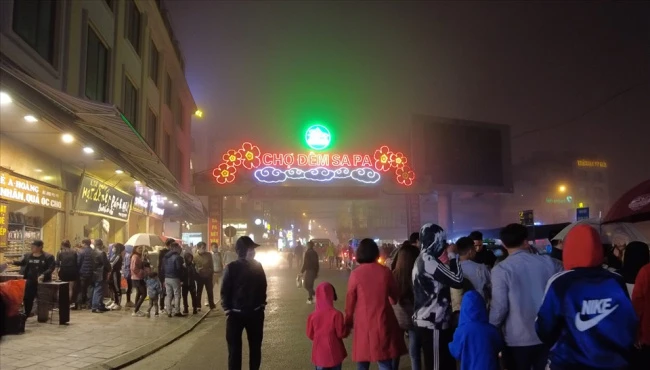
Sapa night market is located in the center of town.
Sapa Night Market is situated in the heart of Sapa Town, a picturesque area in Lao Cai Province, Vietnam. This vibrant market is centrally located, making it easily accessible for both locals and international tourists. Nestled amidst the stunning mountainous landscape of Sapa, the market is a key attraction that offers a unique cultural experience. The market is held on the main street, which transforms into a lively pedestrian zone in the evening.
2. Operating Hours
The Sapa Night Market operates from late afternoon until late at night, typically starting around 6 p.m. As the sun sets, the market comes alive with colorful stalls, bustling activity, and an array of local goods. The vibrant atmosphere continues into the night, providing visitors with ample time to explore, shop, and enjoy the diverse offerings of this bustling market. The market usually winds down by around 10 p.m. to midnight, giving visitors a full evening to immerse themselves in the local culture and cuisine.
Do not miss: Bac Ha Market
III. History and Culture of Sapa Night Market
1. History of Sapa Night Market
Sapa Night Market is deeply rooted in the cultural heritage of the Sapa region, a mountainous area in northern Vietnam known for its rich diversity of ethnic groups. The market has evolved from a traditional local market into a vibrant night market that reflects the region’s unique cultural tapestry.
Historically, it has been a venue for the local ethnic minorities, including the H’mong, Dao, Tay, and Giay peoples, to exchange goods, showcase their traditional crafts, and engage in communal activities.
The origins of Sapa Night Market can be traced back to the early 2000s, when it was officially established to promote tourism and support local artisans. It serves as a living testament to the traditional way of life of these communities, preserving their customs and practices while adapting to the needs of modern tourism. The market’s growth has been fueled by its ability to offer a platform for cultural exchange and economic interaction between the local population and visitors.
2. Role in the Community
Sapa Night Market plays a crucial role in fostering cultural and economic exchanges between the local residents and tourists. For the local communities, it is not only a source of income but also a vital part of their cultural identity. The market provides an opportunity for local artisans and traders to display their handcrafted products, traditional textiles, and ethnic souvenirs, which are integral to their cultural heritage.
For visitors, Sapa Night Market offers an immersive experience of the local culture. Tourists have the chance to interact with local vendors, learn about traditional crafts, and taste local delicacies, thereby gaining a deeper understanding of the region’s customs and traditions. The market is a melting pot of cultures, where the vibrant display of traditional clothing, handicrafts, and food creates a dynamic atmosphere that enriches the travel experience.
Read more: Hanoi to Sapa tour
IV. Local Specialties and Unique Souvenirs
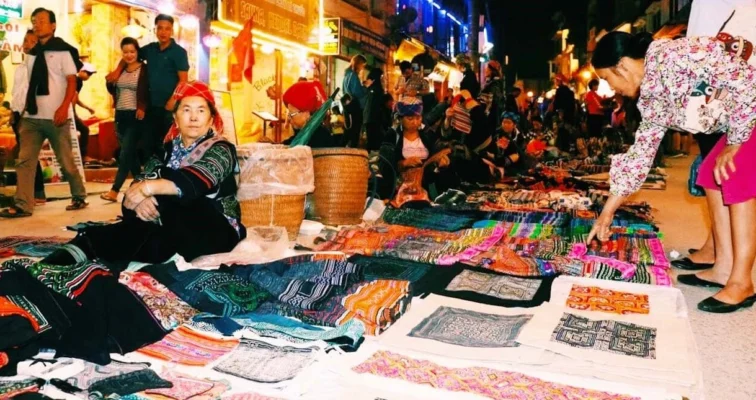
Handwoven fabrics of ethnic minorities are sold at the market.
The Sapa Night Market are a treasure trove of unique local products that make perfect souvenirs for travelers. Among the most sought-after items are handwoven brocade fabrics, meticulously crafted by the H’Mong, Dao, and other ethnic communities.
These vibrant textiles, often transformed into scarves, bags, and clothing, showcase intricate patterns that reflect the cultural heritage of the region. Purchasing these brocade items not only brings home a piece of Sapa’s artistic tradition but also supports the livelihoods of local artisans.
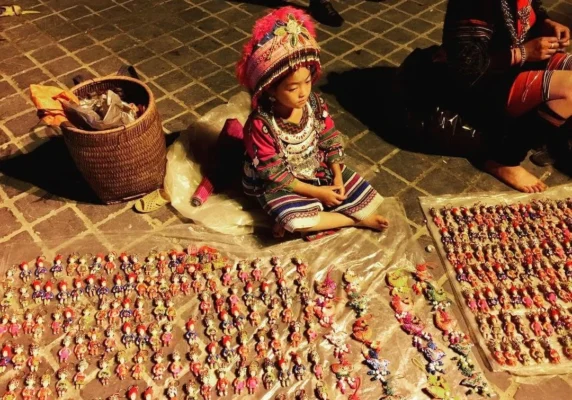
Completely handmade souvenirs
For those interested in jewelry, the markets offer a wide selection of handmade accessories made from silver, bronze, and colorful beads. These include earrings, necklaces, and bracelets, often adorned with ethnic motifs and designs. The craftsmanship behind these pieces represents the skill and creativity passed down through generations.
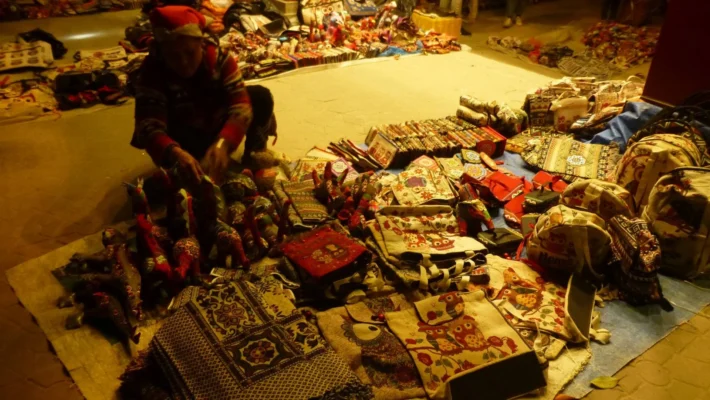
Handmade bags with eye-catching colors and patterns.
Travelers can also find handcrafted bags, ranging from small pouches to larger tote bags. These bags, made from natural materials like hemp and dyed using traditional methods, are durable and stylish. Each piece tells a story of local craftsmanship, making them excellent gifts or personal keepsakes.
Shopping Tips:
- When looking for high-quality souvenirs, it’s advisable to check the stitching and materials used in brocade products. Genuine items are often denser and more detailed in their craftsmanship.
- For jewelry, ensure the pieces are made from authentic materials by asking the sellers about their origins.
- Don’t hesitate to engage in friendly bargaining. Negotiation is common at Sapa night markets, and it’s part of the shopping experience.
Learn more about: Best things to do in Sapa
V. What to Eat in Sapa Night Market
Sapa night markets are a food lover’s paradise, offering an array of traditional street foods that capture the essence of local flavors. When visiting, you simply cannot miss these iconic dishes:
1. Thang Co
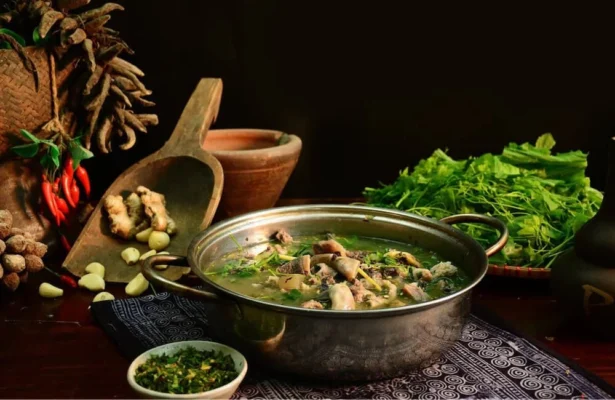
Thang Co
Thang Co is a traditional dish of the H’Mong people, made primarily from horse meat, organs, and bones. Cooked in a large pot with a mix of herbs, spices, and fermented vegetables, it’s a flavorful yet unique experience for adventurous eaters. This dish is often enjoyed with corn wine and is a must-try for those seeking authentic local cuisine.
2. Sapa Grilled Dishes
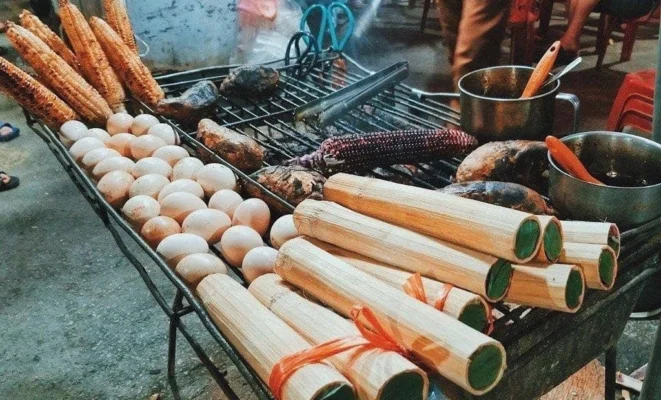
Sapa Grilled Dishes
The cold weather in Sapa makes grilled dishes (nướng) incredibly popular. Vendors line the streets, offering a variety of skewers, including grilled pork, chicken, beef, and even local specialties like bamboo tube rice (cơm lam). These dishes are marinated with local spices, creating a smoky, savory flavor that pairs perfectly with the mountain atmosphere.
3. Bamboo Sticky Rice
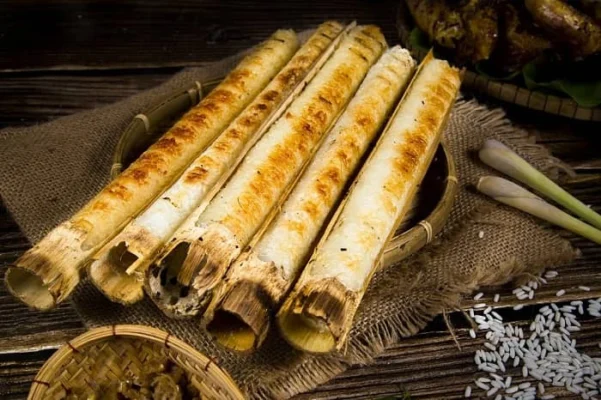
Bamboo Sticky Rice
Bamboo Sticky Rice is a simple yet delicious dish made by steaming sticky rice inside bamboo tubes. The rice is infused with the subtle aroma of bamboo, giving it a distinct and pleasant taste. Often served with grilled meats, Cơm Lam is both a tasty and culturally significant food in the region.
4. Assorted Skewers (Various Grilled Skewers)
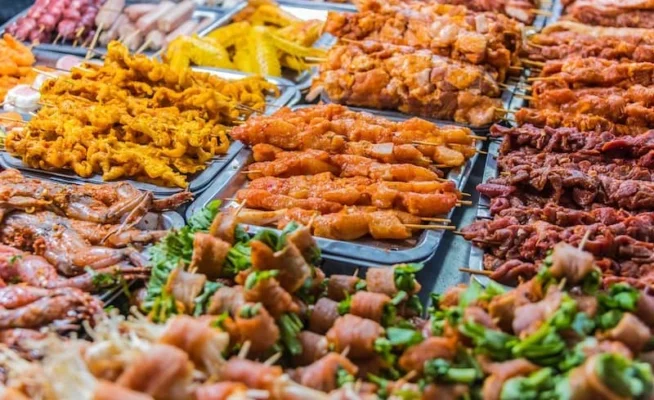
Assorted Skewers
Besides traditional grilled meats, you can also find a variety of unique skewers, including grilled mushrooms, eggplant, and even local sausages. These are cooked over open flames right in front of you, giving them a crispy exterior and a juicy interior.
The street food stalls at Sapa Night Market are not just about the food but also the lively atmosphere. Tourists gather at these vibrant spots to savor the taste of Sapa while socializing with locals and fellow travelers.
Some of the most popular street food vendors are found near the town center, offering a cozy setting with simple tables and chairs where visitors can enjoy their meals while soaking up the cool mountain air. These eateries are often highly recommended by both locals and tourists, making them the perfect places to experience Sapa’s culinary traditions.
Do not miss: Sapa cuisine
VI. Cultural Experiences at Sapa Night Market
The Sapa Night Market offers a captivating glimpse into the rich cultural heritage of the region, with traditional performances and interactive activities that draw visitors into the local way of life.
1. Traditional Music and Dance Performances
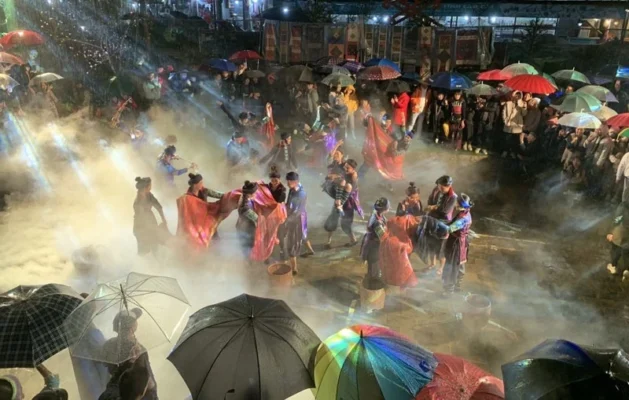
Art performance program at Sapa night market
One of the highlights at Sapa night market is the vibrant display of traditional music and dance. Local ethnic groups such as the H’Mong, Dao, and Tay often perform their folk dances and play unique musical instruments like the khen (a bamboo flute) and the dan moi (a mouth harp).
The rhythmic tunes and graceful movements tell stories of the highland people’s daily lives, their connection to nature, and their spiritual beliefs. These performances not only preserve cultural traditions but also create an immersive experience for tourists.
Start your journey with: Hanoi to Sapa Private Tour
2. Interactive Cultural Activities
The night market also provides opportunities for visitors to engage directly with the local culture. Some stalls and community areas invite tourists to join in traditional dances or learn simple steps. This interaction bridges the gap between locals and visitors, making the experience more than just a visual spectacle.
Additionally, workshops or demonstrations, such as weaving or crafting sessions, allow visitors to appreciate the skill and artistry involved in creating the handmade goods sold at the market.
3. Engaging with Local Communities
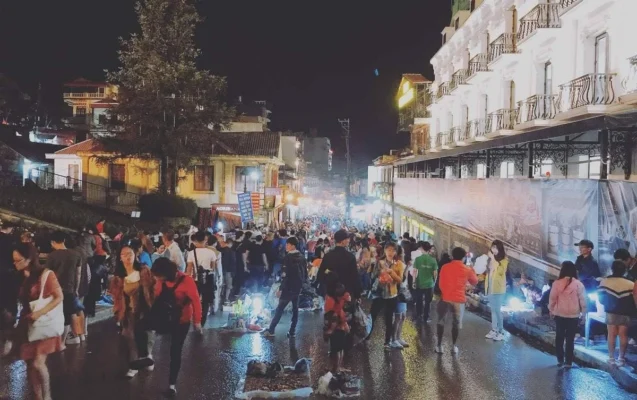
Sapa night market is a great place to learn about Sapa’s indigenous culture
The locals in Sapa are known for their warmth and hospitality, often initiating conversations with visitors through shared activities. Whether it’s joining a communal dance circle, watching a live performance, or simply chatting over a cup of traditional herbal tea, these interactions offer a more authentic connection to the region. For many tourists, these moments become lasting memories, as they not only observe but also participate in the living culture of Sapa’s ethnic minorities.
VII. Tips for Visiting Sapa Night Market
1. How to Get to Sapa Night Market
Walking from Sapa Town Center
- Distance: The Night Market is centrally located in Sapa Town, typically a short walk from most hotels and accommodations.
- Directions: If you’re staying in the heart of Sapa Town, you can simply walk to the Night Market. Head towards the main square or the Sapa Cathedral, and you will find the market along the main pedestrian streets.
- Estimated Time: Approximately 10–15 minutes, depending on your exact location.
Taxi or Motorbike Taxi from Sapa Town Center
- Availability: Taxis and motorbike taxis are readily available in Sapa Town.
- Booking: You can hail a taxi, book a motorcycle taxi through local apps, or ask your hotel to arrange one.
- Estimated Time: 5–10 minutes, depending on traffic and your starting point.
2. Best Time to Visit Sapa Night Market
The Sapa Night Market typically start getting lively around 6:00 p.m. and continue until late in the evening. To experience the markets at their best, it’s recommended to visit between 7:00 p.m. and 9:00 p.m.
During this time, the markets are bustling with locals and tourists, offering a vibrant atmosphere with plenty of shopping options, street food stalls, and cultural performances. If you prefer a quieter shopping experience, arriving slightly earlier, around 6:00 PM, will allow you to explore before the crowd builds up.
3. Bargaining Tips
Bargaining is a common practice in Sapa’s night markets, especially when purchasing handicrafts, souvenirs, and traditional clothing.
- Don’t be afraid to negotiate the price, as vendors often set an initial price that allows room for negotiation.
- Start by offering around 50–70% of the asking price and gradually work your way to a mutually agreeable amount.
- Be polite and friendly during the bargaining process; a smile and respectful attitude can go a long way. However, remember that these markets are also the livelihood of many locals, so avoid pushing for excessively low prices.
4. Personal Safety and Belongings
Like any crowded market, it’s important to stay mindful of your belongings.
- Keep your valuables, such as wallets, phones, and passports, securely stored in a zipped bag or a money belt.
- Avoid carrying large amounts of cash, and consider using anti-theft bags with hidden compartments for added security.
- When moving through busy areas, keep your bag in front of you and hold it close.
- Additionally, stay alert and aware of your surroundings to prevent any issues with pickpockets, especially during peak hours when the market is most crowded.
VIII. Nearby Attractions Around Sapa Night Market
1. Sapa Stone Church
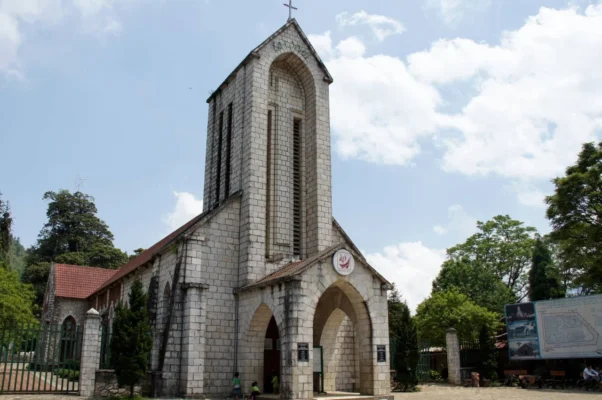
Sapa Cathedral
Located just a short walk from the Night Market, Sapa Stone Church stands out with its striking Gothic architecture and colorful stained glass windows. Constructed during the French colonial period, the cathedral is a symbol of Sapa’s historical heritage. Visitors can admire its impressive design, enjoy a moment of tranquility away from the bustling market, and take beautiful photographs of this iconic landmark.
You will be like: Sapa Tour from Hanoi 7 Days
2. Hoang A Tuong Palace
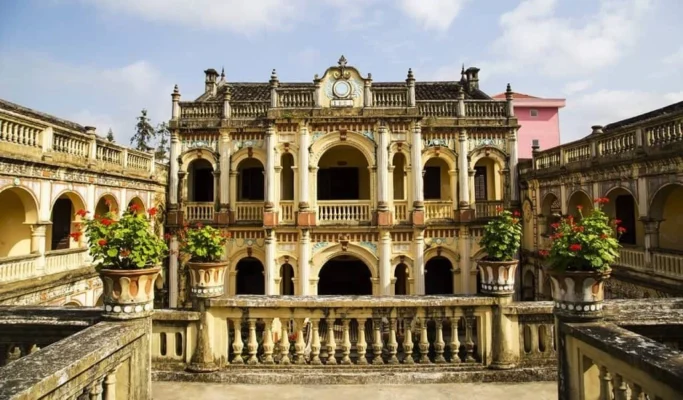
Hoang A Tuong Palace
Hoang A Tuong Palace is a unique historical site that showcases a blend of European and H’mong architectural styles. This grand building was once the residence of the H’mong king and provides insights into the local royalty’s lifestyle. The palace features elegant design elements, historical artifacts, and panoramic views of the surrounding landscape, making it a fascinating destination for history enthusiasts.
Read more: Hanoi to Bac Ha Market Tour
3. Sapa Culture Museum
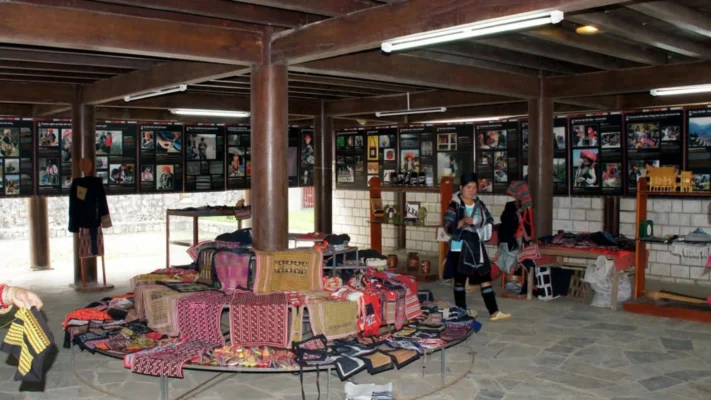
Sapa Museum
Situated near the market, the Sapa Culture Museum offers a comprehensive look into the region’s rich history and diverse cultures. The museum’s exhibits include traditional costumes, cultural artifacts, and informative displays about the various ethnic groups in Sapa. It’s an excellent place to gain a deeper understanding of Sapa’s cultural heritage and the local way of life.
Click here: Northern Vietnam Itinerary
4. Cat Cat Village
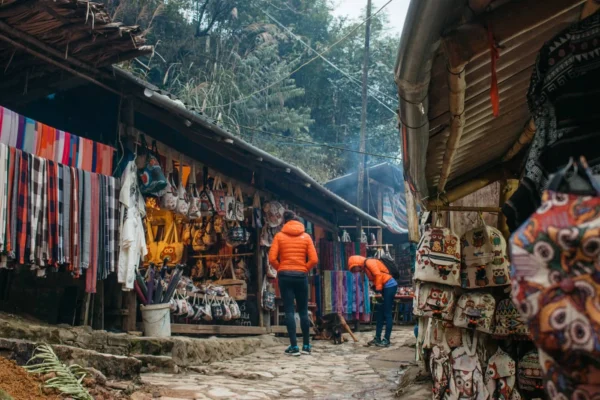
Cat Cat Village
Just a 10-minute drive from the Night Market, Cat Cat Village is a traditional H’mong settlement known for its scenic beauty and cultural charm. Visitors can explore traditional H’mong houses, purchase handmade crafts, and enjoy the stunning views of terraced fields and waterfalls. The village provides an authentic experience of local culture and is a great spot for souvenir shopping.
Are you looking for Sapa tours?
In summary, Sapa Night Market is a must-visit destination for international travelers eager to immerse themselves in the vibrant culture and local traditions of Sapa. This lively market provides a rich experience with its array of delicious street food, unique handicrafts, and engaging cultural performances. To fully appreciate the essence of Sapa and create unforgettable memories, make sure to include a visit to this enchanting night market in your travel itinerary. Don’t miss the opportunity to explore Sapa’s vibrant nightlife and connect with the local community. Plan your visit to Sapa Night Market with Ula Travel today!
See more: Sapa travel tips



